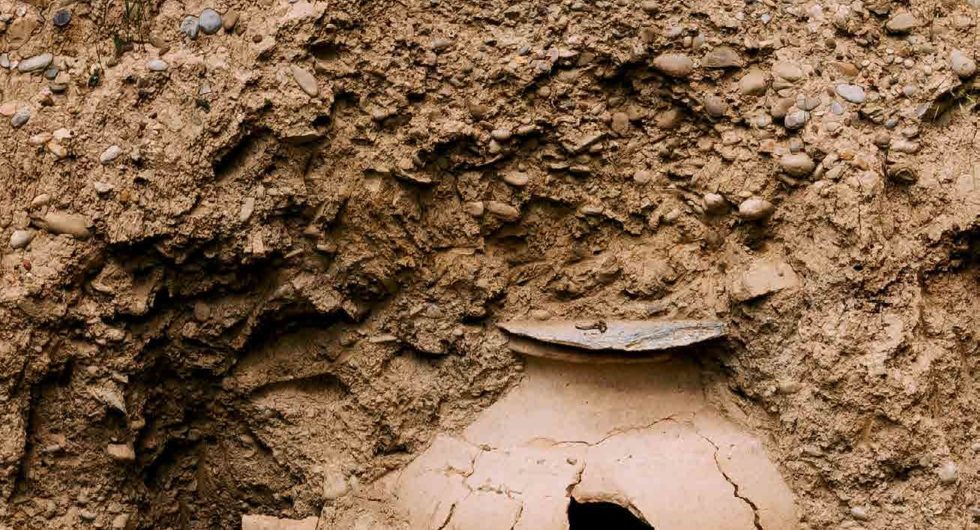Amphoras
The new trend

The new trend

Modern oenology cannot reinvent itself comprehensively and is constantly drawing on the past in order to progress. Neo-retro is currently fashionable and non-interventionism is a vocation. Of course, this is always about perfecting ancient techniques, warranting technical data sheets being tarnished with a ‘one size fits all’ approach: ‘combining tradition and modernity’, ‘revisiting the past’, and who knows what else. But in fact, this is exactly what it is about: re-establishing a form of dialogue between eras. Past practices and tools are making a comeback, whilst being updated to current tastes (granted, another sweeping concept). In terms of containers, the current neo-retro trend is without a doubt amphoras.
Let us agree on the term ‘amphora’. An amphora is normally a small container (<30 l) with two handles that enable it to be moved around by one person or two people. In the past, they were most frequently used for service. Larger containers of a volume and weight that make them impossible to move (and thus with no handles) should really be described as jars, dolia as the Romans called them, kvevri as consistently used in the northern Caucasus since the 6th century BC, or similar. But whatever the vocabulary, the strong resurgence of amphoras is due to the material from which they are made: clay.
A brief reminder of our equipment over the past four decades:
– Forty years ago, antique wooden casks in both small and large sizes (>200 hl) and concrete vats (mostly 150 to 350 hl) occupied our wineries.
– Then, casks of doubtful hygiene were turned into furniture with an incredible patina, or cut into segments that could be used to heat fireplaces. Stainless steel vats began to be used, and concrete gained a second youth coated in epoxy resin.
– This time, rather than replacing anything, small-capacity oak barrels were added alongside existing containers, overtaking new spaces in wineries specially devoted to them.
– These Bordeaux barrels (225 l) and Burgundy barrels (228 l) quickly grew in size (400, 500, 600… 3500 litres), becoming ‘foudre’ casks, although not of the sizes used in the 1950s.
– The same logic was then applied to concrete; small vats of sometimes uncertain shapes appeared on the oenological scene. This time, it was all about not coating anything, and using the material ‘naturally’.
– The next logical step was to restore terracotta amphoras to wineries, 2600 years after they were (almost completely) banned.
Today, all of this stands side by side, sometimes even in the same place, offering a broader spectrum of colours for winemakers to play with. One of the particular features of clay is the fact that it is watertight but not completely airtight. This means that, like wood, it enables the wine to ‘breathe’ (unlike stainless steel), mature (tannin-anthocyanin links are created thanks to the presence of oxygen, and yeast autolysis is efficient) and improve without taking on the oak aromas that some technicians consider parasitic. Its advantage over concrete is that it offers greater resistance to acids and bases. The total lack of iron, found around barrels and within concrete, means that there is no electrical conductivity and thus it does not impede the action of the lees. Ultimately, clay – which does not release any aromatic substances into the wine – seems to be the best vehicle for emphasising the fruitiness of the grape and the specific features of the terroir.
Winemaking in amphoras is intrinsically a very natural process. Even so, this is not a neutral material. Extended maturation in ‘open’ clay can oxidise a light wine or one that reacts more strongly to oxygen, such as Grenache Noir. Wines such as these require stoneware with a higher silica content and a higher baking temperature (up to 1,200°C), which serves to glaze the clay, leaving only a low level of residual porosity. A Mourvèdre, Tempranillo or Cabernet Sauvignon, on the other hand, will benefit from pure terracotta baked at a temperature of no higher than 1,040°C. On the spectrum between stoneware and terracotta, some potters offer clay types that I describe as ‘technical’. In these, certain mineral elements are added to the base clay, to provide mechanical reinforcement and/or to make the material less gas permeable (like silica).
The base clay (from France, Tuscany, China, Germany or elsewhere) is selected based on physicochemical analysis and then oriented towards production for oenological use. The shape of the container is also important, but that applies for any material. Elongated, horizontal or vertical, round, egg or pear shaped, 200 or 3,000 litres: the winemaker makes a specialised choice in each case based on use for red, rosé or white and on the time spent on the lees (or otherwise). Once the shape and nature of the clay have been determined, the winemaker can choose to vinify in the amphora (a non-interventionist approach requires impeccable quality grapes) and/or mature their wine in another container after fermentation.
Using a clay container that does not release any aromatic substances into the wine seems to be a logical part of a return to the ‘natural’. Often associated with organic and biodynamic approaches, it is far from being just the latest trendy gadget. For winemakers seeking authenticity and for consumers tired of a standardisation of flavour, clay is the perfect vehicle, emphasising the fruitiness of the grape variety and the specific features of the terroir. It certainly encourages winemakers to focus on producing high quality grapes before they are processed in the winery. The freshness often highlighted by several months of maturation in amphoras should win over even the greatest sceptics.
By Xavier-Luc Linglin – Director